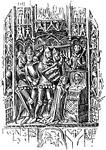Clipart tagged: ‘martyr’
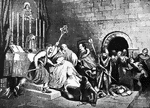
Death of Becket
"Death of Becket. During the early years of the reign Thomas A. Becket, as the king's chancellor, had…

Bishop Reginald Heber
Having taken holy orders in 1807, he took up the family living of Hodnet in Shropshire. In 1809 he married…
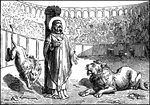
Ignatius of Antioch is Martyred by Being Fed to Lions
Illustration of Ignatius of Antioch, also called Ignatius Theophorus, tied to a post by his neck and…
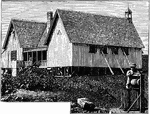
Bishop Patteson's House, Norfolk Island
John Coleridge Patteson (April 1, 1827 – September 20, 1871) was an Anglican bishop and martyr. On…

Peter Crucified on an Upside Down Cross
Illustration of Peter being bound to an upside down cross. One man holds his upper body, while another…
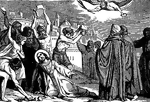
Stephen Stoned to Death as He Looks up to Heaven
"and they cast him out of the city, and stoned him: and the witnesses laid down their garments at the…

The Stoning of Stephen, the First Martyr
"And they stoned Stephen, calling upon the Lord, and saying, Lord Jesus, receive my spirit. 60 And he…
